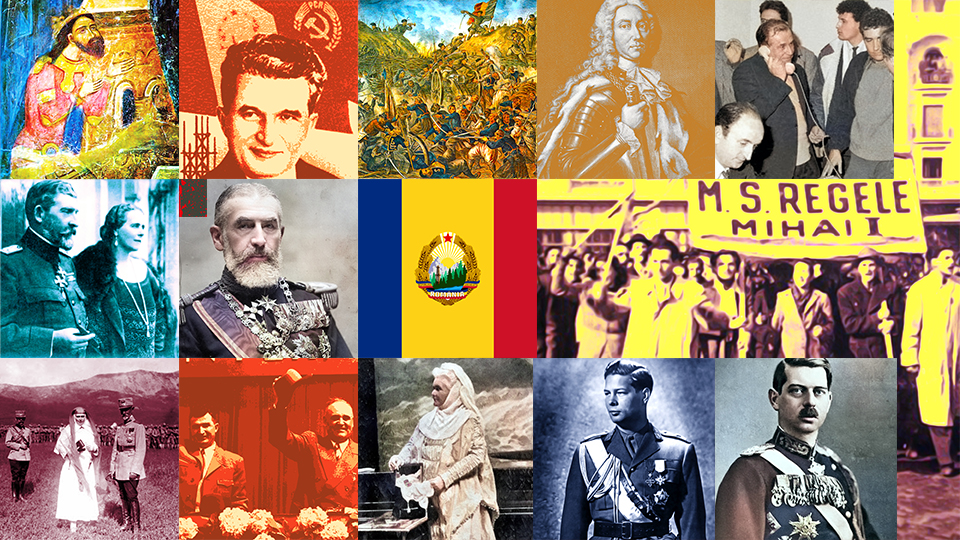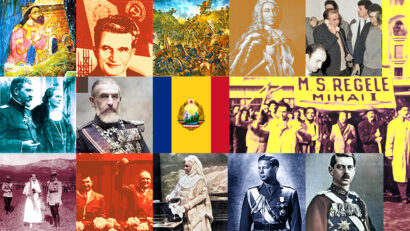The Romanian Revolution Narrated to Young People
December is the month when, since 1989, Romanians have commemorated the fall of the communist regime

Steliu Lambru, 30.12.2024, 13:27
December is the month when, since 1989, Romanians have commemorated the fall of the communist regime, a regime that had trampled their rights, freedoms and their very essence as human beings for almost half a century. They commemorate that December 1989 because the return to normality was achieved through bloodshed, as the communist regime exited history through violence, just as it had emerged.
As time passes and emotions cool down, people become able to look at those events with a clearer eye, and the younger generations of Romanians look at December 1989 with the curiosity and the detachment of those who have not been directly affected by it.
It is worrying that many young people today lack an accurate picture of the political regime that the young people of 1989 threw into the dustbin of history, and even worse, that they say they see no problem with living during those times. But the young people of 1989 try to shed light on the significance of what they did, for today’s generations to better understand what their grandparents and parents had gone through.
The historian and writer Alina Pavelescu, a member of the generation that made the 1989 revolution, wrote a book on “The 1989 Revolution Narrated to Those Who Haven’t Lived It.” We asked her if there was a message that the 1989 generation managed to convey to the future generations:
Alina Pavelescu: “Obviously, we should have done it, and we should have found the meaning of what happened to us in the last 35 years. But we haven’t managed to do it so far, and we can only hope that we will be wiser from now on. I could only offer my personal testimony, as a person for whom this topic is still emotionally loaded, even 35 years later. And it is precisely this emotional burden, which all of us who witnessed the 1989 Revolution directly still carry, this emotional burden is what prevents us from seeing things clearly. But, at least, we can tell our stories honestly, so that people younger than us understand how the 1989 Revolution changed their lives for the better, and so that they find meaning in it for us, if we cannot do it.”
Alina Pavelescu felt that she had something to say to today’s and tomorrow’s generations about the year 1989. And she chose to do this in a book:
Alina Pavelescu: “I set out first and foremost to stimulate critical thinking in young people. I realize that they are presented with different stories and different versions and that, probably, they are wondering where the truth is, among all these versions. And so, the first thing I did was to present to them all the theories and hypotheses that I identified in the revolution narratives, with their arguments for and against. But, I admit, in the epilogue of this book I could not help but tell them specifically that the Revolution of 1989 was, indeed, a revolution because it radically changed all of our lives. We owe the freedom of the last 35 years to this event, even if we did not really know what to do with this freedom and we have always had the feeling that someone stole it from under our noses. But even so, the fact that we have it, that we have not yet lost it, is something we owe to the Revolution of 1989 and to the people who sacrificed themselves then, those who sat down in front of the rifles in the street, those who died.”
Combining the talent of a writer and the skills of a historian, Alina Pavelescu wrote about the year 1989, confronting conflicting views and blending professional requirements, personal memories and value judgments.
Alina Pavelescu: “A historian should provide a coherent and true story, or at least as close to the truth as possible, as close as possible to the intersection of the truth of certain events. It is not for historians to give lectures, necessarily, or not necessarily lectures beyond the personal example that we all have the right to use. But I fear that in Eastern Europe and in Romania, where history is all too often the terrain of political struggles in which identities and the way we define our identities are constantly the subject of political competitions, historians will never truly manage to stay in their ivory tower. And so, if this is the context in which we live, I think the most honest thing for us is to acknowledge this context and try to do things as well as possible from our perspective and within this context. I do not think that we should close ourselves in the ivory tower, I do not think the ivory tower is a realistic option. At the same time, we should not let others transform our subject, namely history, into just a battlefield in which politicians fight.”
No matter how much time passes and regardless of perceptions, the year 1989 will remain a year of grace. It is, like it or not, the boundary between what is detestable and what is good in this world. (AMP)






























